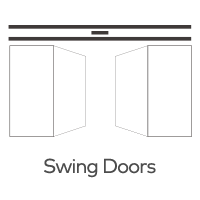What are the security features of a door controller to prevent unauthorized access?
In an era where security is a top priority for both residential and commercial properties, access control systems have become indispensable. Door controllers, as the central component of these systems, play a critical role in safeguarding access points and preventing unauthorized entry. To ensure the highest level of security, door controllers are equipped with various advanced features designed to thwart unauthorized access attempts effectively. In this article, we will explore some of the essential security features of a door controller and how they work to protect against unauthorized access.

1. Authentication Methods:
Modern door controllers offer multiple authentication methods, ensuring only authorized individuals can gain entry. These methods include:
Keycards or Key Fobs: These are physical credentials that users present to the door controller for access.
Biometric Readers: Utilizing unique physical characteristics like fingerprints, iris scans, or facial recognition to verify the user's identity.
PIN Codes: Users enter a specific code or password to gain access.
2. Access Levels and Permissions:
Door controllers allow administrators to define access levels and permissions for different users or groups. This feature ensures that individuals only have access to authorized areas based on their roles or responsibilities.
3. Audit Trail:
An audit trail records all access events, including successful and unsuccessful attempts. It allows administrators to monitor and review who accessed specific areas and when, aiding in investigations if any security breaches occur.
4. Anti-passback:
The anti-passback feature prevents users from sharing access credentials or "tailgating" (following closely behind an authorized user to gain entry without authentication). It requires users to present their credentials for both entry and exit, eliminating unauthorized re-entry attempts.
5. Time-based Access Control:
Door controllers can be programmed to restrict access during specific time frames. This ensures that users can only access certain areas during designated hours, enhancing security outside of regular operating hours.
6. Tamper Detection:
Door controllers are equipped with tamper detection mechanisms that trigger an alarm or lock the system when unauthorized attempts to tamper with or bypass the device are detected.
7. Encryption:
To protect sensitive data and communication between the door controller and the access control system, encryption protocols are employed, ensuring that data cannot be intercepted or manipulated.
8. Remote Management and Alerts:
Modern door controllers offer remote management capabilities, allowing administrators to monitor and control access from anywhere. They can also receive real-time alerts in case of security breaches or system malfunctions.
9. Duress Codes:
Duress codes are special PIN codes used in emergency situations where users can discreetly trigger a silent alarm, signaling security personnel without the intruder's knowledge.
Conclusion:
Door controllers are equipped with a range of advanced security features to prevent unauthorized access and protect the safety of individuals and property. Through multiple authentication methods, access levels, audit trails, anti-passback, time-based access control, tamper detection, encryption, remote management, and duress codes, these devices offer robust protection against potential security threats. With the continuous advancements in technology, door controllers continue to evolve, providing ever more sophisticated security measures to meet the growing demands of modern access control systems.







